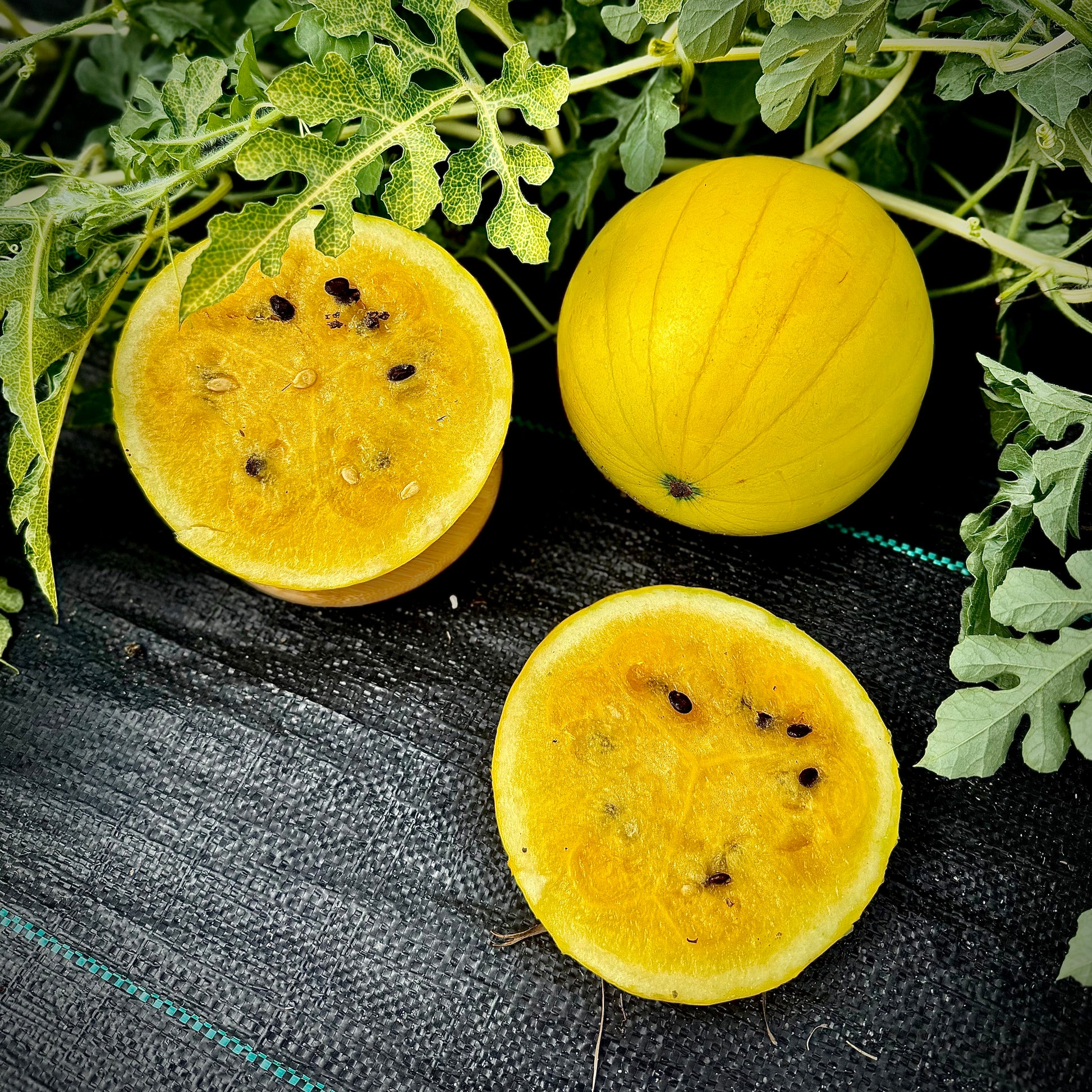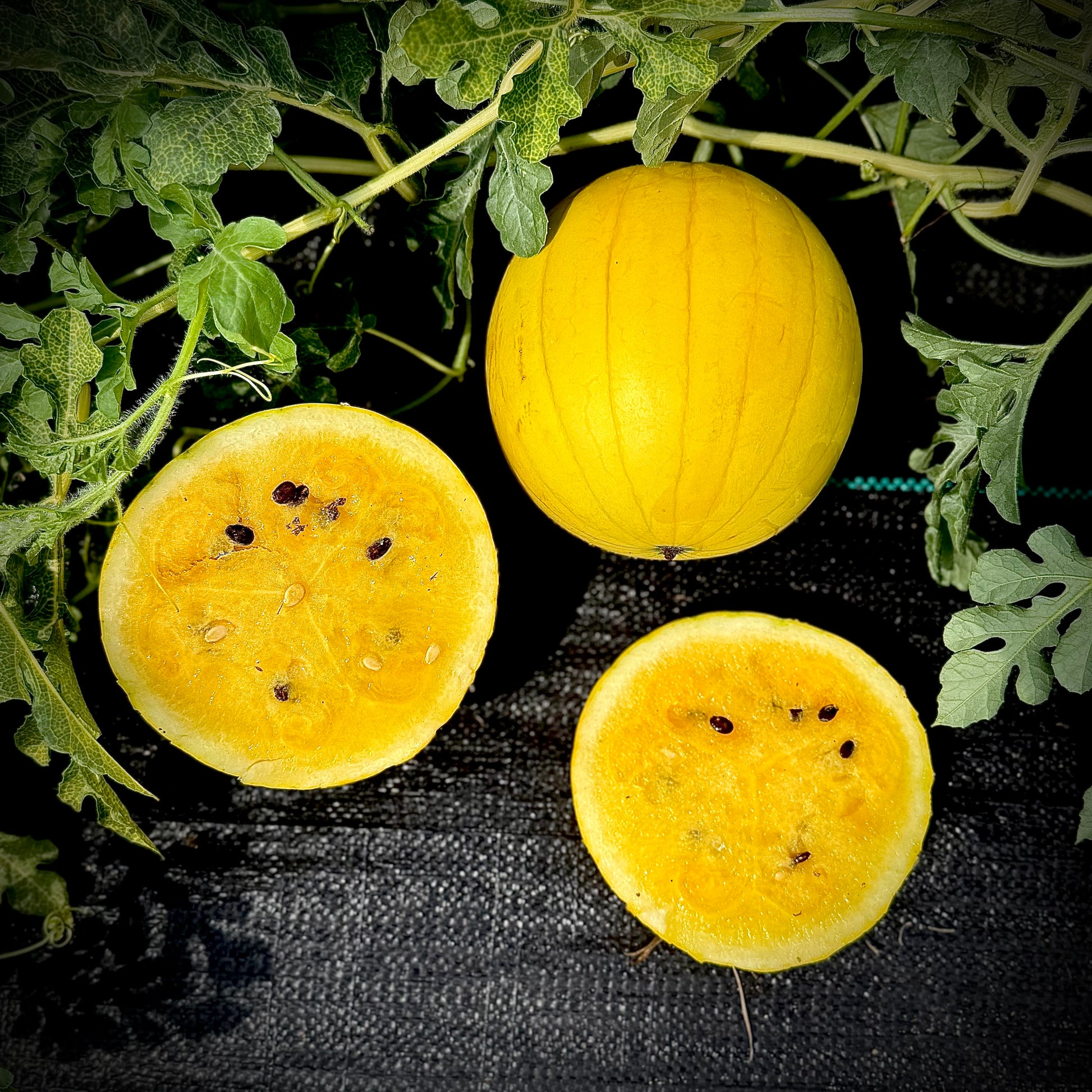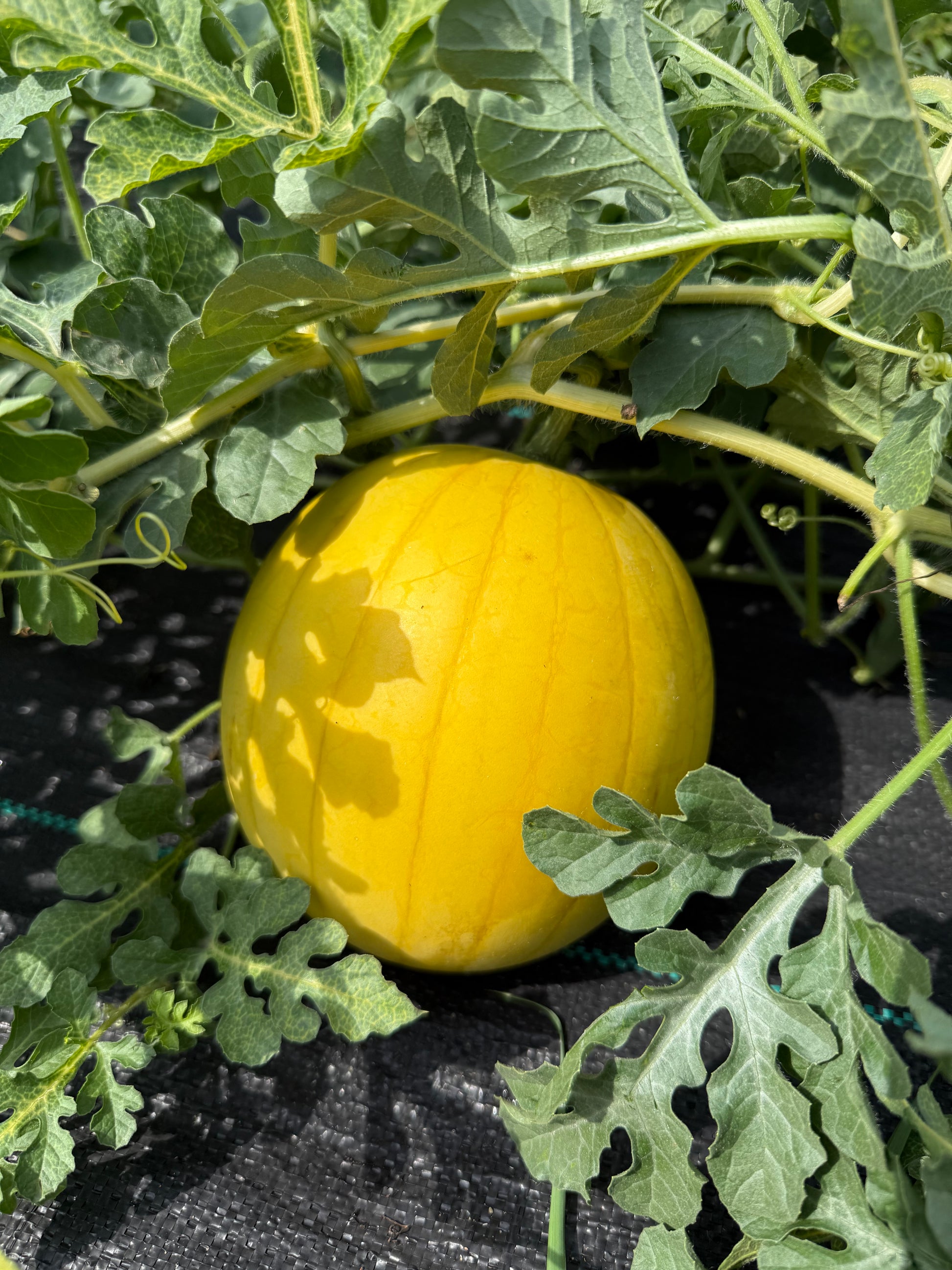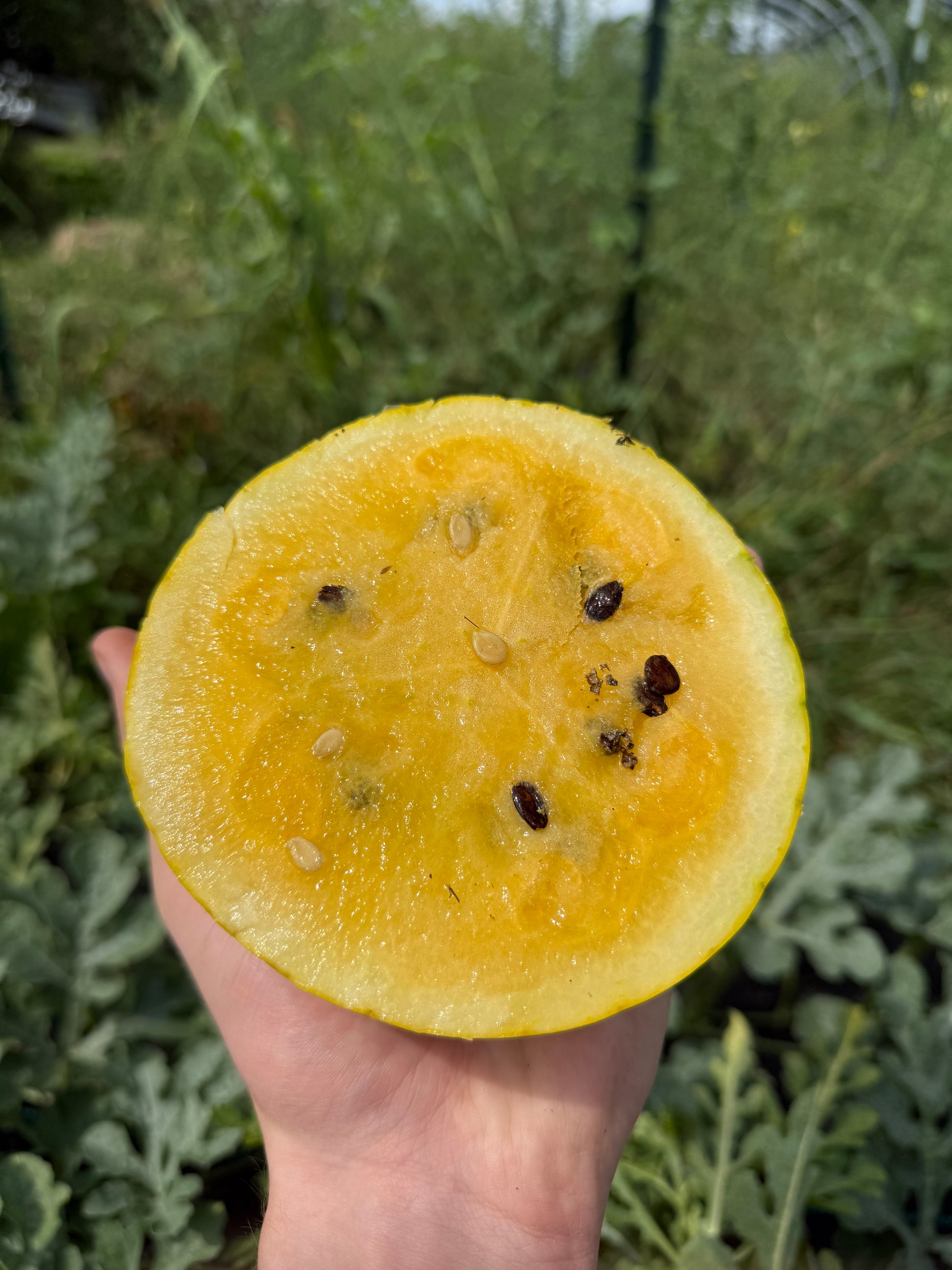Watermelon - Lemon Drop
Watermelon - Lemon Drop
5.0 / 5.0
(1) 1 total reviews
Couldn't load pickup availability
Minimum Seed Count: 8 Seeds
The Lemon Drop watermelon is a striking, unusual, and early maturing variety that lives up to its name! On the outside, it has the classic round-to-oblong watermelon shape with a smooth, lemon-yellow rind which sets it apart from traditional green watermelon! Inside, the flesh is a brilliant yellow, glowing almost like sunshine when sliced open. Its texture is crisp and juicy, but what makes it truly unique is the flavor—refreshingly sweet, thin walled and edible right to the rind! Medium-sized fruits average around 5-8 pounds, making them perfect for sharing, and their bright flesh makes them a showstopper on fruit platters or summer picnics. Compact plants produce an abundance of these yellow jewels! A select few will stay a light green. By far the most unique watermelon variety we trialed in 2026!
SUPER LIMITED SEED COUNT!!
🌱 Planting Guide:
1️⃣ When to Plant
-
Plant after the last frost when soil temperature is at least 70 °F (21 °C).
-
In cooler climates, you can start seeds indoors 3–4 weeks before the last frost and transplant when nights stay warm.
2️⃣ Soil Preparation
-
Prefers loose, well‑drained, fertile soil with a pH between 6.0–6.8.
-
Mix in compost or well‑rotted manure before planting to boost nutrients.
3️⃣ Seed Sowing
-
Direct Sow: Plant seeds ½–1 inch deep in small hills.
-
Spacing:
-
Hills: 3–4 seeds per hill, spaced 3–4 ft apart.
-
Thin to 2 strongest plants once seedlings emerge.
-
-
Row Planting: Space plants 3 ft apart in rows 5–6 ft apart.
4️⃣ Watering & Care
-
Keep soil consistently moist, especially during flowering and fruiting.
-
Water at the base of the plant, not on the leaves, to prevent disease.
-
Mulch with straw or black plastic to retain moisture and warm the soil.
5️⃣ Fertilizing
-
Start with a balanced fertilizer (e.g., 10‑10‑10).
-
Once vines start running, switch to phosphorus and potassium‑rich fertilizer to support flowers and fruit.
6️⃣ Pollination
-
Bees are the main pollinators. If bee activity is low, hand pollinate by brushing pollen from male flowers to female flowers (those with a tiny melon at the base).
7️⃣ Harvesting
-
Ready about 75–90 days after planting.
-
Signs of ripeness:
-
Tendril nearest the fruit turns brown and dries.
-
Rind becomes slightly dull and produces a deep, hollow thump when tapped.
-
Share
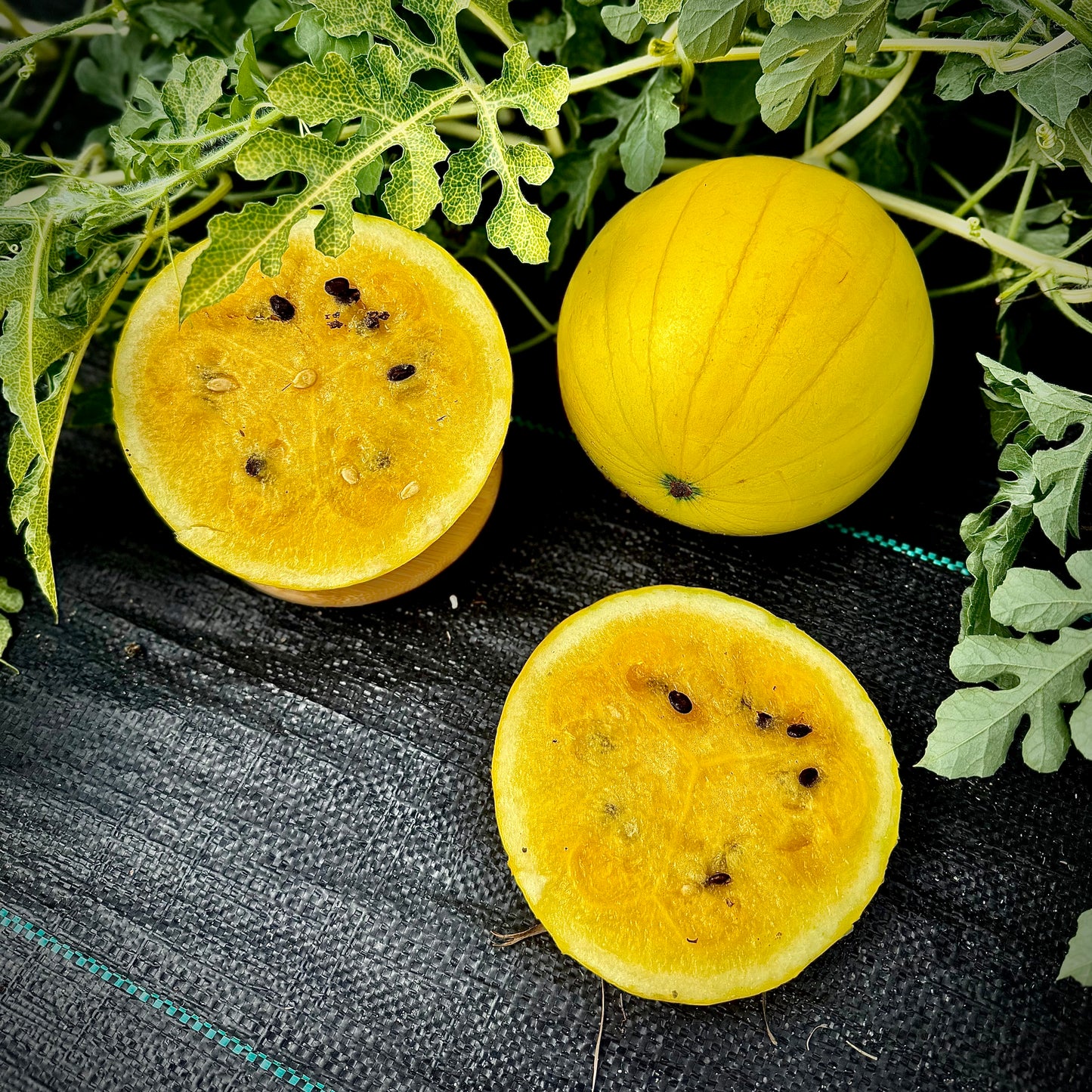
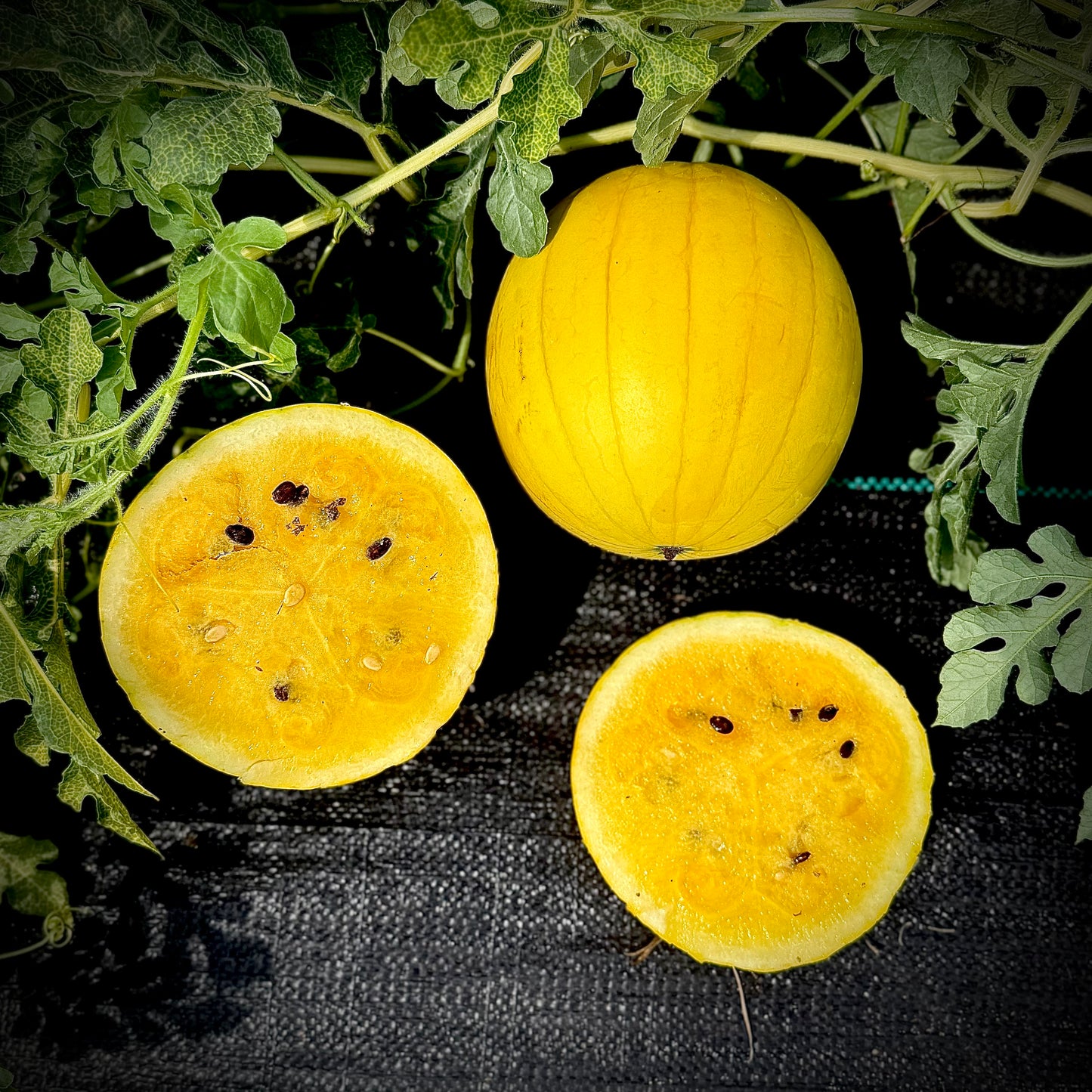
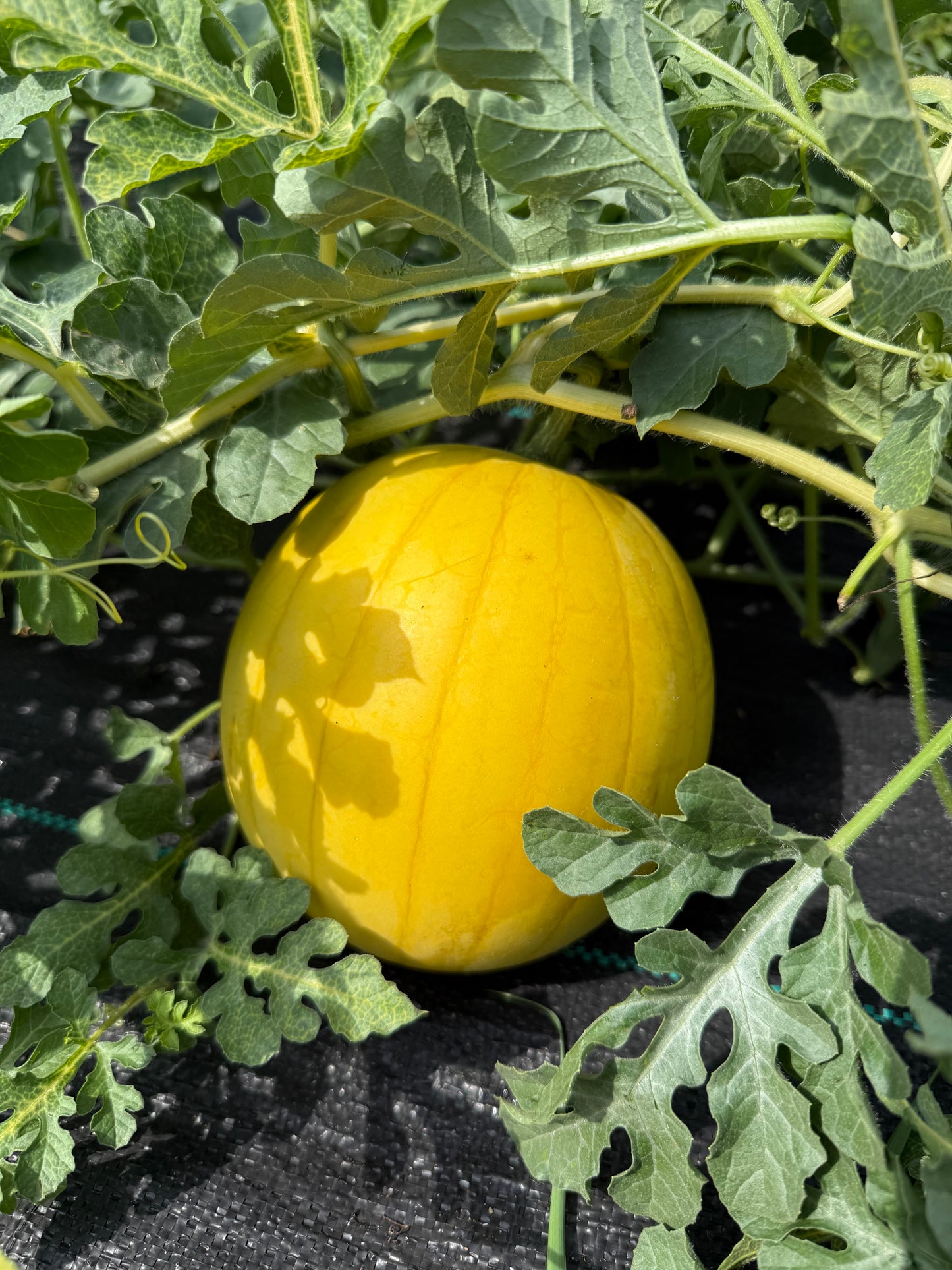
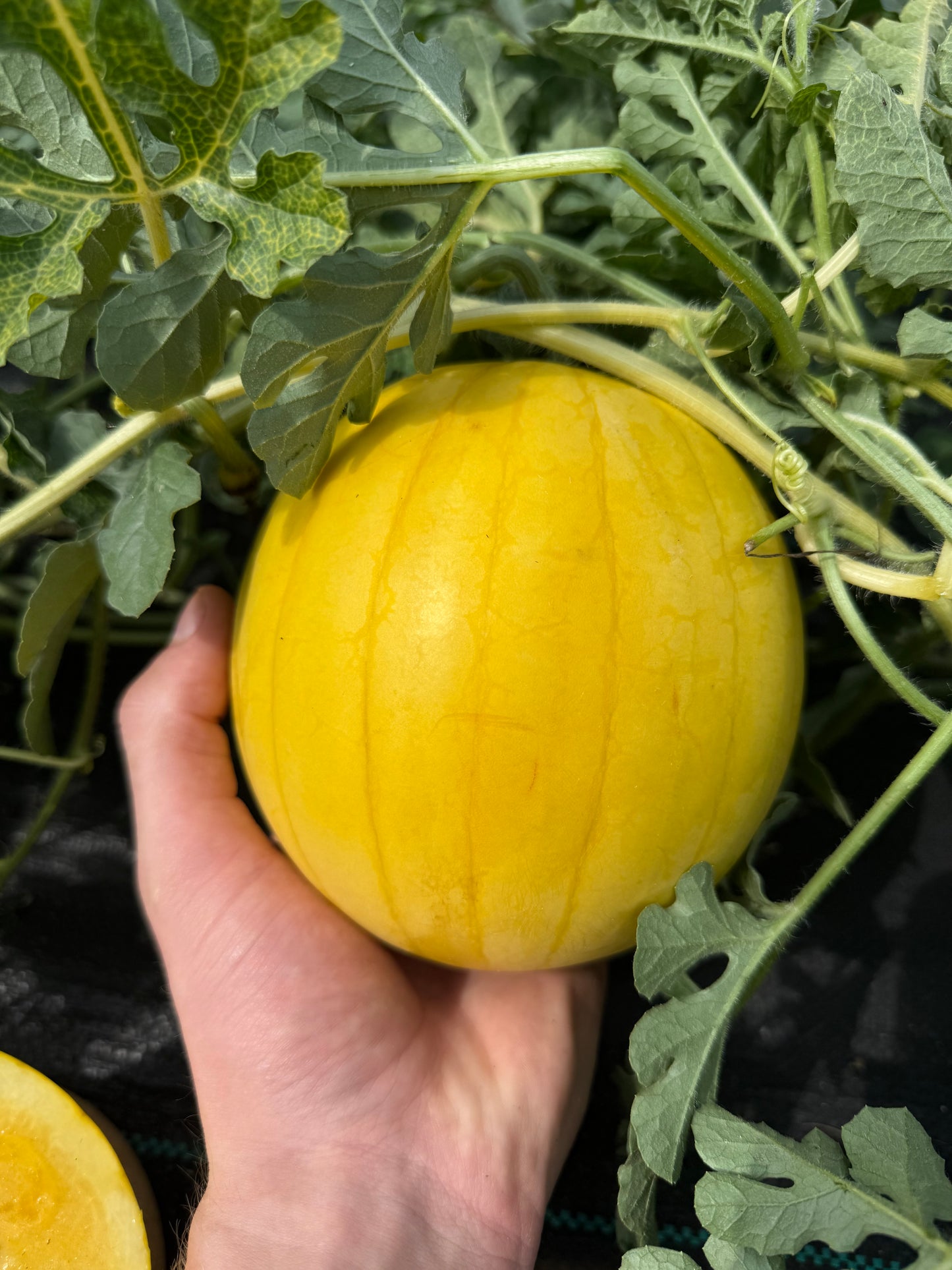
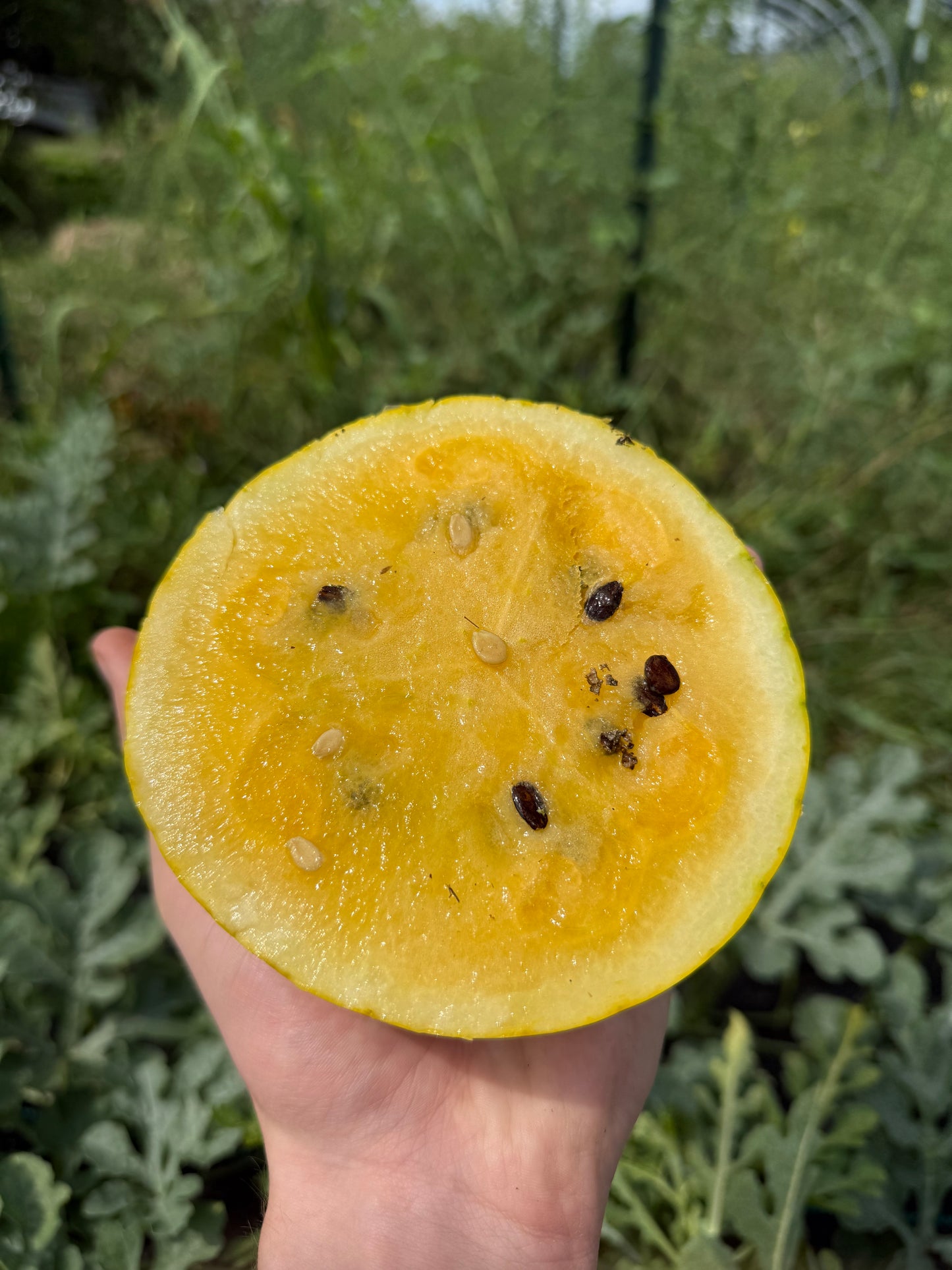
I haven't grown yet as they just arrived.However,I needed to take a minute to speak on this company's amazing customer service!

